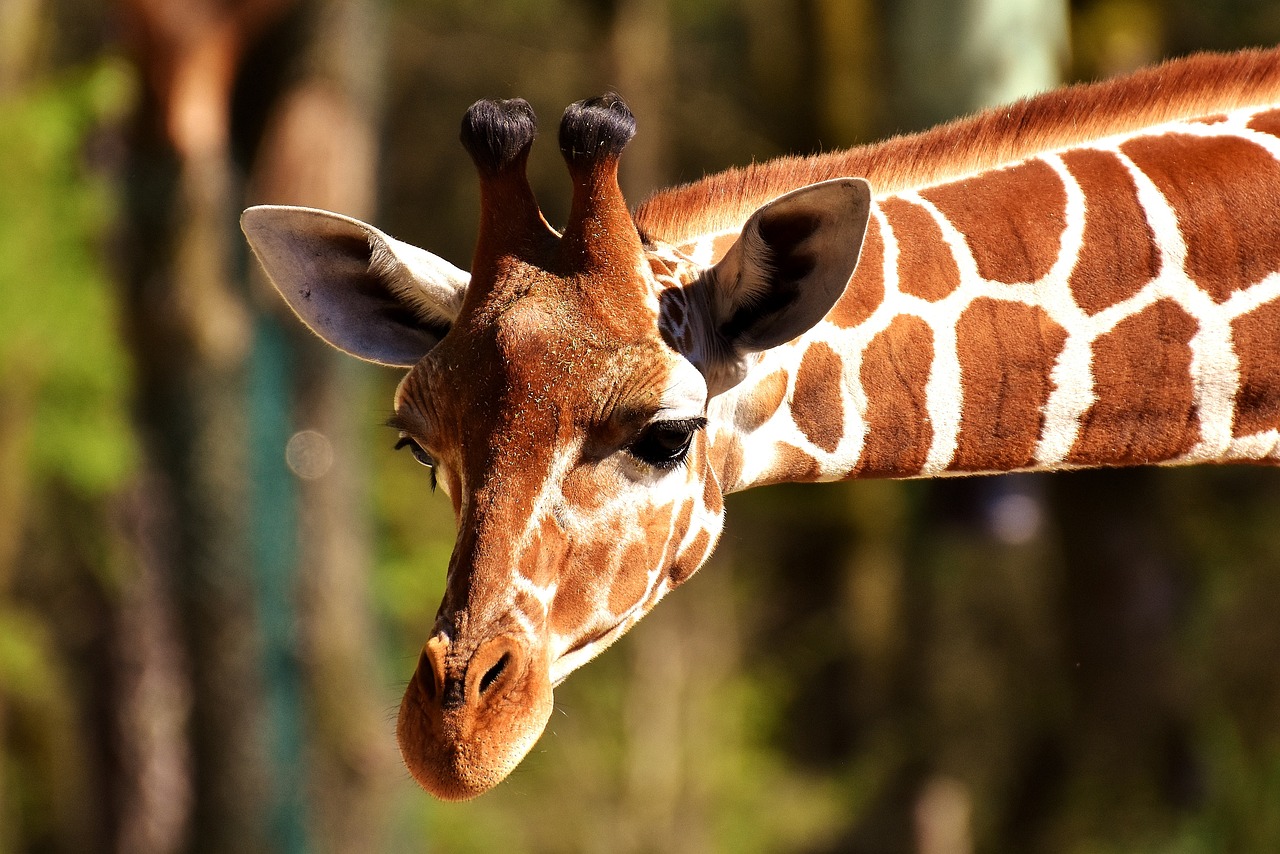- Giraffes are the tallest land animals on Earth, with adult males reaching heights of up to 18 feet (5.5 meters).
- They belong to the family Giraffidae and are known by their scientific name, Giraffa camelopardalis.
- Giraffes have long necks that can reach lengths of up to 6 feet (1.8 meters), allowing them to browse leaves high in the treetops.
- Despite their long necks, giraffes have the same number of neck vertebrae as humans—seven.
- They have distinctive coat patterns, with no two giraffes having the same pattern.
- Giraffes are herbivores and primarily feed on leaves, buds, and shoots from acacia and other trees.
- Their long tongues, measuring up to 20 inches (50 centimeters), are used to grasp leaves and pull them into their mouths.
- Giraffes have specialized valves in their necks to control blood flow and prevent sudden changes in blood pressure when they lower their heads to drink water.
- They have a unique walking gait, known as “pacing,” where both legs on one side move together, creating a rocking motion.
- Giraffes are social animals and live in loose groups called towers or herds.
- Tower members establish a hierarchical structure through “necking” contests, where they swing their necks and heads at each other.
- The gestation period for giraffes is around 15 months, and females give birth to a single calf while standing.
- Giraffe calves can stand and walk within an hour of birth and can even start eating leaves within a week.
- Adult giraffes have powerful kicks that can be used as a form of defense against predators like lions and hyenas.
- They have a keen sense of hearing and excellent eyesight, allowing them to detect predators from a distance.
- Giraffes have ossicones, which are bony protrusions on their heads. Males’ ossicones are typically thicker and more prominent.
- Both male and female giraffes have small horns called “ossicones” covered with skin and hair.
- Giraffes require very little sleep and often rest for short periods, averaging around 30 minutes per day.
- They have a prehensile tongue that helps them pluck leaves and navigate around thorns.
- Giraffes can consume large quantities of water when it is available but can also survive for long periods without drinking by extracting moisture from the vegetation they eat.
- They can run at speeds of up to 35 miles per hour (56 kilometers per hour) over short distances.
- Giraffes’ hearts weigh around 25 pounds (11 kilograms) and are two feet (60 centimeters) long, helping to pump blood up their long necks.
- They have a blue-black tongue, which is thought to protect it from sunburn during prolonged feeding.
- Giraffes produce low-frequency vocalizations that are below the range of human hearing and are used for communication.
- They have a lifespan of around 25 years in the wild and can live longer in captivity.
- Giraffes are found in savannas, grasslands, and open woodlands of sub-Saharan Africa.
- There are four distinct species of giraffe: the northern giraffe, southern giraffe, reticulated giraffe, and Masai giraffe.
- The reticulated giraffe has a distinctive coat pattern of large, polygonal patches outlined by narrow white lines.
- Giraffes are not territorial animals, and multiple herds can overlap in the same area without conflict.
- They have a specialized cardiovascular system that prevents blood rushing to their heads when they lower them to drink water.
- Giraffes are important seed dispersers, as they eat the seeds along with leaves and spread them through their feces.
- The giraffe’s long neck provides them with a wide field of vision, allowing them to detect predators from afar.
- Giraffes communicate through a variety of vocalizations, including grunts, snorts, moans, and hisses.
- They have a lifespan of around 25 years in the wild, but giraffes in captivity can live up to 30 years or more.
- Giraffes have a specialized saliva that protects their mouth and throat from the thorns of the acacia trees they feed on.
- The tongue and lips of a giraffe are tough and can withstand the thorns of acacia trees, which can be several inches long.
- Giraffes have a natural cooling system in their bodies. The large surface area of their long necks helps dissipate heat.
- Their long legs enable them to take large strides and cover ground quickly when needed.
- Giraffes have a gentle and calm nature, but males can engage in “necking” battles during mating season to establish dominance.
- They are ruminants, meaning they have a four-chambered stomach that allows them to regurgitate and re-chew their food.
- Giraffes have been listed as vulnerable to extinction, primarily due to habitat loss, poaching, and human-wildlife conflict.
- They can go for long periods without drinking water, as they can extract moisture from the leaves they eat.
- Giraffes have unique patterns on their fur that act as a form of camouflage, helping them blend into their surroundings.
- Despite their large size, giraffes have only seven vertebrae in their necks, the same number as humans.
- They have excellent peripheral vision, which helps them detect predators approaching from the side.
- Giraffes have a complex and elongated larynx that allows them to produce low-frequency sounds that carry over long distances.
- They have a high tolerance for heat and can withstand temperatures of up to 113°F (45°C).
- Giraffes have a keen sense of balance, allowing them to navigate and feed from high branches without difficulty.
- They have long eyelashes and thick eyelids to protect their eyes from sun and dust.
- Giraffes are beloved animals worldwide, captivating the imaginations of people with their unique appearance and gentle nature.
Facebook Comments

































